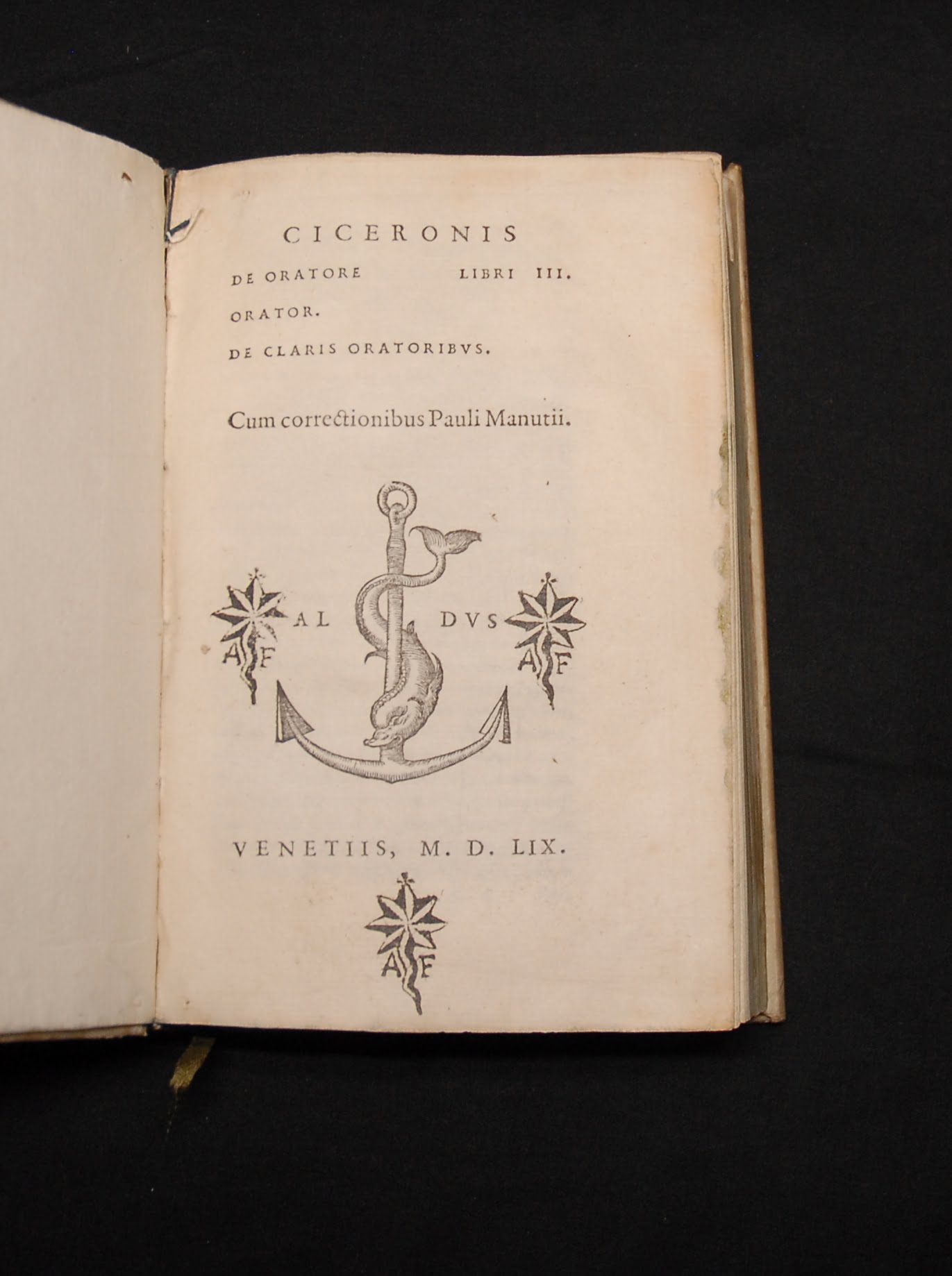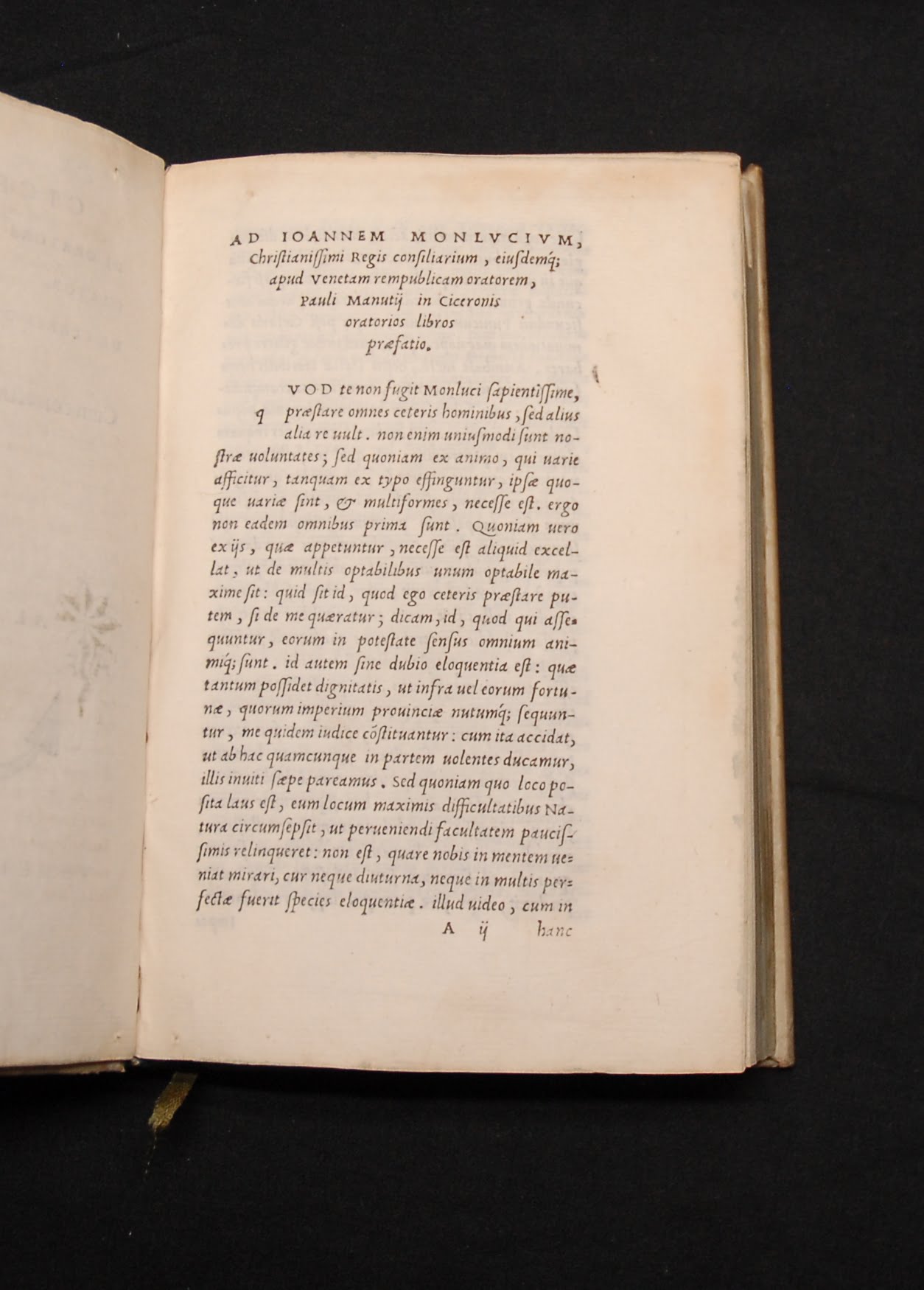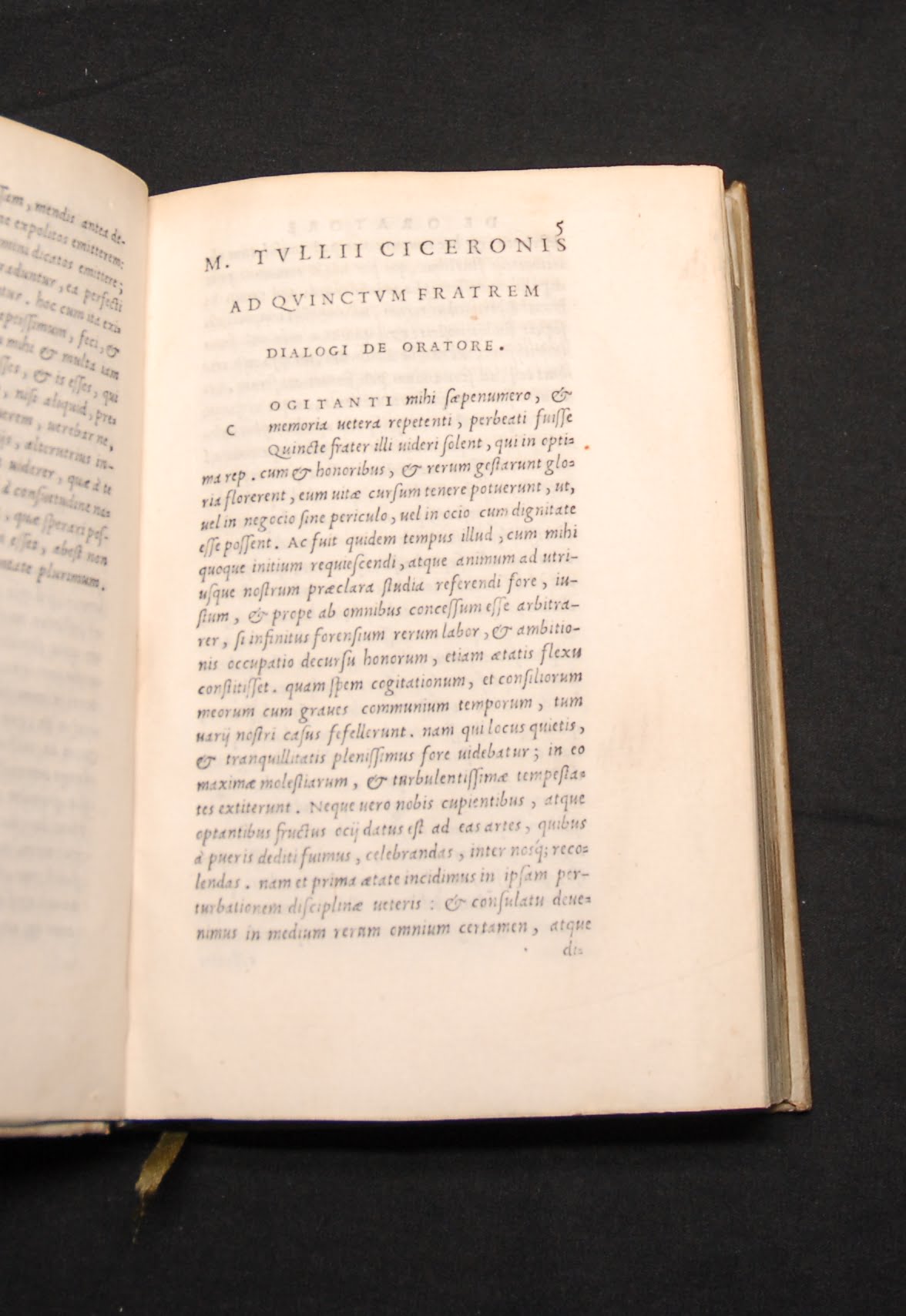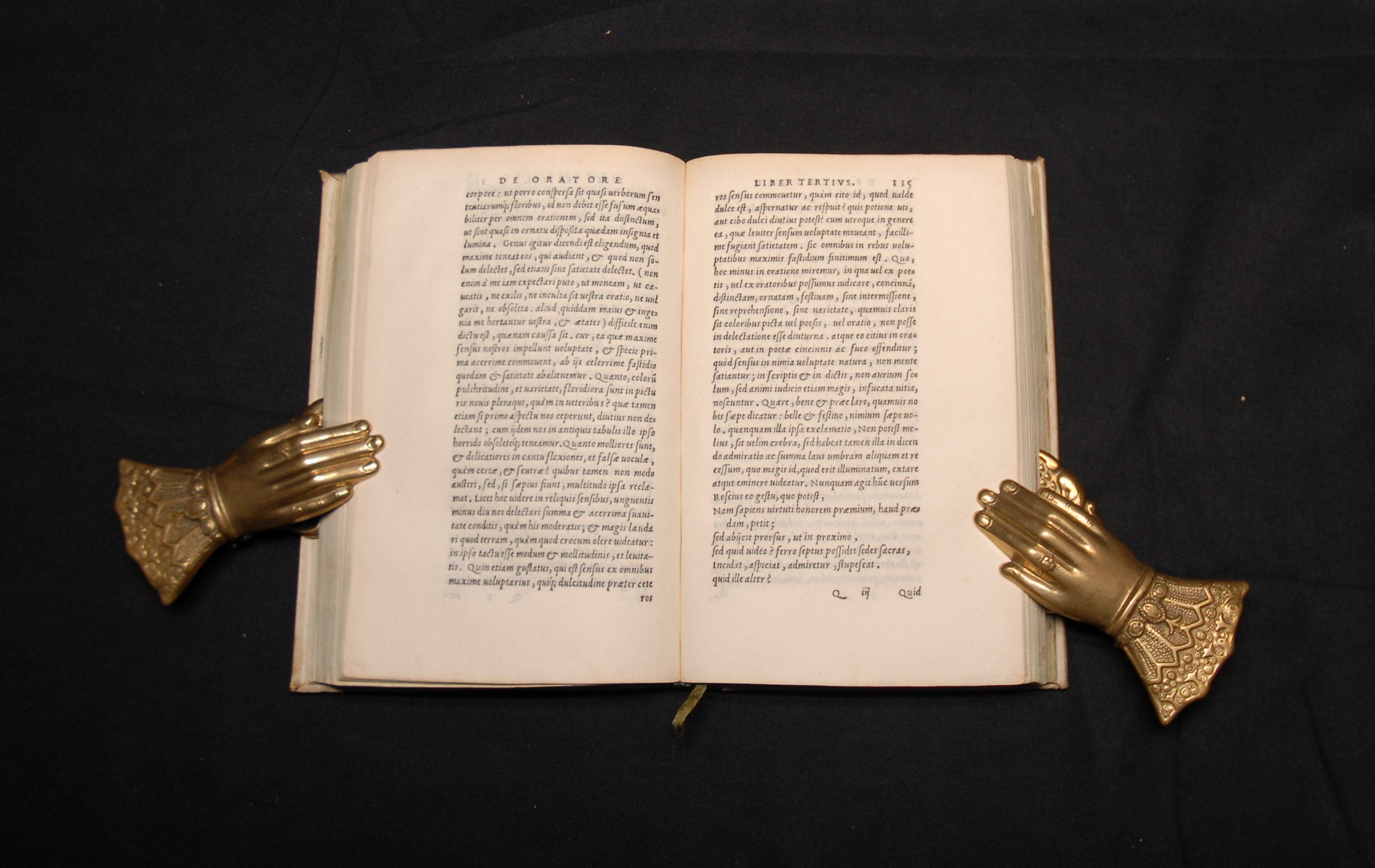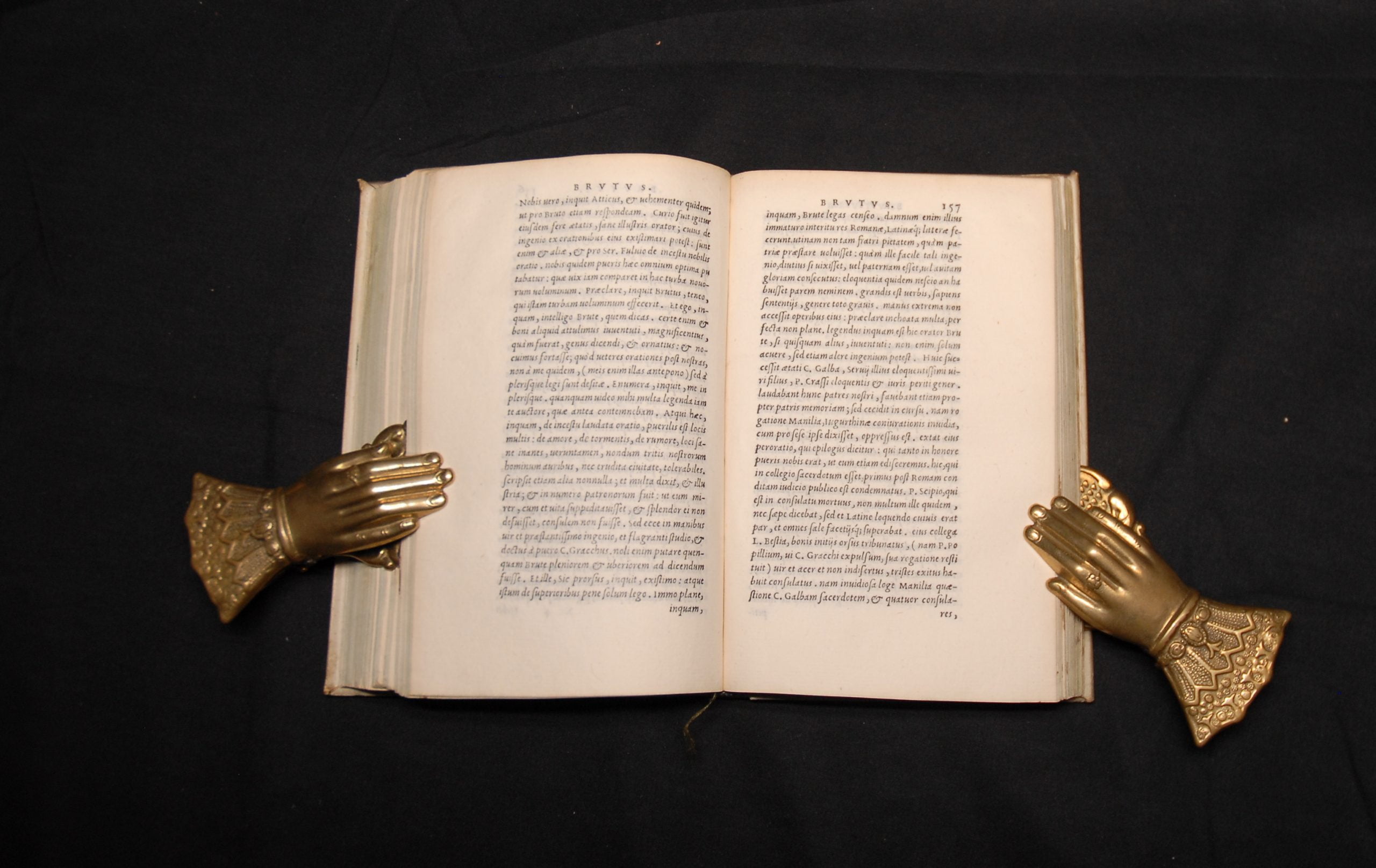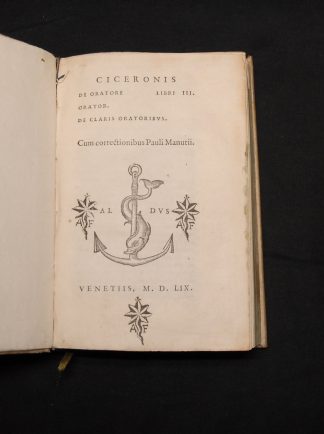CICERO
FASCINATING OWNERSHIP STAMP
De oratore Libri III. Orator. De claris oratoribus.
Venice, [Paulus Manutius], 1559£1,850.00
8vo. ff. 240 [i.e., 248]. Italic letter, occasional Roman. Aldine device to t-p. Very slight yellowing, printing tear and smudge to outer blank margin of I4, the odd little marginal mark, ink splash to upper and outer edge of last couple of gatherings. A fresh, well-margined copy in c.1700 vellum, gilt-lettered morocco label to spine, all edges blue, silk bookmark. Early ownership stamps of a comet with monogram AF to t-p and verso of last.
This very rare, fascinating woodcut stamp—a comet with seven points surmounted by a small lily and flanked by AF—has defied our attempts at discovering the identity of its mysterious owner, who proudly stamped it 3 times on t-p and once on verso of last. The heraldic route led to the Schininà family of Ragusa, who bear very similar arms, but the keeper of their collection confirmed it is not among the recorded family ex-libris. Its rarity, unusual iconography and absence from major provenance bibliographies suggests it probably belonged to an individual student or young scholar with a small library, or to a small scholarly institution or accademia. If an individual, it was probably someone who did not bear arms he could use for an ownership stamp. The little lily might indicate a Florentine provenance. We could only trace another copy—vol.3 of 3 of Cicero’s ‘Orationi’ (Venice, 1556), at the Biblioteca Storica in Longiano (M5272)—with the same stamp appearing twice on the t-p and twice on the last two ll. That both occurrences appear in mid-C16 student editions of Cicero supports this theory. In the 3-volume Longiano set, only vol.3 bears the stamp, vol.1 having none and vol.2 lacking the first and last gatherings. Both vols 1 and 3 share the same early C17 ms. ex-libris, though vol.3 is sewn differently, with 4 instead of 3 stations. This suggests that vol.3, the only one with the stamp, was probably acquired separately by the same early C17 owner who then signed all t-ps. Since this set has since been preserved intact in Longiano, the comet stamp must have already been present when vol.3 was acquired and signed, plausibly dating it no later than c.1600.
A fresh, well-margined copy of the second volume, published separately, of the ‘Opera Rhetorica’, edited by Paulus Manutius. The second edition, the text based on the 1546 and corrected by Manutius. One of the most influential figures of classical antiquity, Marcus Tullius Cicero (106-43BC) put his legal skills to the service of politics with speeches which became landmarks of forensic oratory. Defined by Quintilian as ‘eloquence itself’, his copious prose production occupied a fundamental place in medieval syllabi. This second volume begins with ‘De oratore’, an immensely influential analysis of how a good orator should construct persuasive arguments which should however be driven by sound ethical principles. There follow ‘Orator’, a description of the perfect orator integrating observations in previous works, and ‘De claris oratoribus’, a history of eloquence through individual figures including Pericles and Solon.
Renouard 320:3; Ahmanson-Murphy 580. Not in Dibdin, Moss, Schweiger or Brunet.In stock


